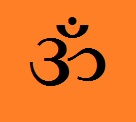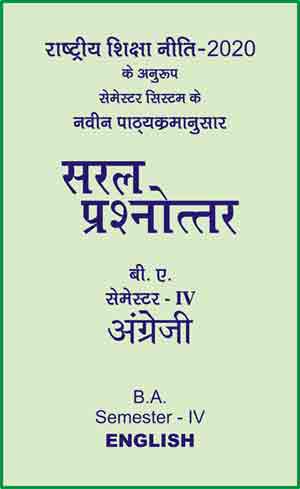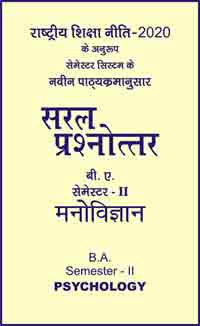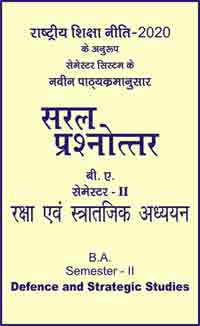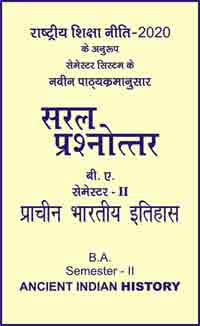|
बी ए - एम ए >> बीए सेमेस्टर-4 अंग्रेजी बीए सेमेस्टर-4 अंग्रेजीसरल प्रश्नोत्तर समूह
|
5 पाठक हैं |
|||||||
बीए सेमेस्टर-4 अंग्रेजी - सरल प्रश्नोत्तर
Objective Type Questions
For each of the following questions, four alternatives are given for the answer. Only one of them is correct. Choose the correct alternative.
1. The word translation is derived from the .......... translatum”.
(a) Latin
(b) Greek
(c) German
(d) Norse.
2. ......... is the process of converting an original or "source" text into a text in another language.
(a) Etymology
(b) Translation
(c) Phonetics
(d) Linguistics.
3. …………… is the translation within the same language.
(a) interlingual
(b) Intersemiotic
(c) intralingual
(d) Transparency.
4. Translation from one language to another is called ......... translation.
(a) Intralingual
(b) Intersemiotic
(c) Pronunciation
(d) Interlingual.
5. ……….is the conversion of text from one script to another.
(a) Transliteration
(b) Transcription
(c) Decoding
(d) Encoding.
6. .......is the study of sign and sign systems in language.
(a) Sémiotics
(b) Psychology
(c) Pragmatics
(d) Geology.
7. According to Edward Sapir, ........ is a guide to social reality.
(a) Grammar
(b) Language
(c) Dictionary
(d) Book.
8. ....... in translation is being faithful and accurate to the SL text.
(a) Distortion
(b) Target Language
(c) Fidelity
(d) Source Language.
9. Lack of fidelity to the text in SL can be defined as ....... in translation studies.
(a) Spirit
(b) Syntactic
(c) Semantic
(d) Distortion.
10. Traditionally the ... ... ... was considered inferior to the author.
(a) translator
(b) poet
(c) narrator
(d) writer.
11. Jakobson declares that every poetic art is therefore technically .......
(a) translatable
(b) device
(c) untranslatable
(d) imagination.
12. ...... when translated has to be approached as a complex system rather than as a text.
(a) poem
(b) Drama
(c) short story
(d) prose.
13. ....... can be either horizontal or vertical translation.
(a) Paraphras
(b) Medieval translation
(c) Metaphrase
(d) Imitation.
14. Roman Jacobson has distinguished ...... types of translation.
(a) 2
(b) 3
(c) 4
(d) 5
15. A good translation is a translation that provides an........... message of the SLtext in the target language.
(a) opposite
(b) equivalent
(c) irrevelant
(d) wrong.
16. Levy is a ........ translation scholar.
(a) Czech
(b) Australian
(c) German
(d) French,
17. According to Beekman and Callow (1989), there are........ main types of translation:
(a) four
(b) two
(c) one
(d) nine
18. The problems of equivalence arises primarily in translating ......
(a) Poems
(b) Plays
(c) Fiction
(d) Idioms.
19. ....... is another cause of loss in translation.
(a) loss
(b) gain
(c) untranslatability
(d) lexical.
20. The ......... has been translated into many languages since ages.
(a) Books
(b) Bible
(c) Bhagavat Gita
(d) Koran.
21. Translation of the ....... increased considerably in France between 1625 and 1660.
(a) Scottish
(b) Classics
(c) French
(d) English.
22. Formal equivalence is also called as ..........
(a) Dynamic
(b) Covering
(c) Gloss
(d) None of the above
23. Sir John Denhams theory of translation is expressed in his poem ........
(a) To Sir John Franshawe
(b) To sir Francis Franshawe
(c) To Sir Thomas Franshawe
(d) To Sir Richard Franshawe
24. Translation of Pastor Fido was written in the year..........
(a) 1645
(b) 1655
(c) 1648
(d) 1678.
25. The Translated version of the Destruction of Troy was written in the year .......
(a) 1623
(b) 1656
(c) 1695
(d) 1685.
26. The term translation studies was first put forward by...
(a) Lefevere
(b) Destutt de Tracy
(c) James Holmes
(d) Bassnett
27. From which language translationword has been derived:
(a) English
(b) Hindi
(c) Latin
(d) None of them.
28. The word translation comes from Latin word......
(a) Tanslatio
(b) Translation
(c) Transcription
(d) Transport.
29. In which process we exchange our thoughts, feeling and ideas from one language to different language?
(a) Translation
(b) Evaluation
(c) Both (a) and (b)
(d) None of them.
30. TL stands for:
(a) Team leader
(b) Target language
(c) Talk later
(d) Trading language.
31. SL Stands for:
(a) Service level
(b) Senior level
(c) Subjective language
(d) Source language.
32. India is a linguistic galaxy of unparalleled :
(a) richness
(b) hypotonic
(c) deprivation
(d) indigence.
33. has to be admitted as a vast reservoir of translation in Contemporary India.
(a) Hindi
(b) English
(c) Bengali
(d) Tamil.
34. ........ is an important part of the flowing Culture of the human civilization.
(a) Transliteration
(b) Transcription
(c) Interpretion
(d) Translation.
35. The oldest example of Translation is :
(a) Bible
(b) Gita
(c) Rosetta stone
(d) None of them.
36. Tradition of translation started in England during :
(a) 7th Century
(b) 9th Century
(c) 10th Century
(d) 12th Century.
37. The second period of English translation, the modern period starts from the .........
(a) 18th Century
(b) 19th Century
(c) 20th Century
(d) None of them.
38. The Indian tradition of translation into ....... language started from Bharatendu Yuga.
(a) English
(b) Hindi
(c) Sankrit
(d) None of them.
39. The Sanskritised term we currently use for ...........
(a) Transformation
(b) Translation
(c) Transfer
(d) Translate
40. IWE stands for-
(a) Indian writer in English
(b) Indian writer in Epic
(c) Indian writings in English
(d) All of these
41. The Mughal Emperor Akbar set up a translation bureau in India in the-
(a) 19th Century
(c) 16th Century
(b) 18th Century
(d) None of these
42. Who won the Nobel Prize in 1930 for his translation of the "Gitanjali"?
(a) Gulzar
(b) Salma
(c) Rabindranath Tagore
(d) Viyaydan Detha
43. Who received many awards including the Padma Bhushan and the Academy Award for his song "Jai Ho"?
(a) Ambai
(c) Salma
(b) R.N.Tagore
(d) Gulzar
44. Who was the first Indian Nobel Laureate?
(a) Bhisham Sahni
(c) Tagore
(b) Kabir
(d) Mohan Rakesh
45. Who replied "abhi to humne Kabutar ki gutar goon shuru bhi nahi ki hai”?
(a) Salma
(b) Ambai
(c) Tagore
(d) Gulzar
46. When and where C.S. Lakshmi was born?
(a) Rajesthan in 1955
(c) Tamil Nadu in 1946
(b) Tamil Nadu in 1968
(d) Tamil Nadu in 1944
47. Which of the following is also known as a Bijji?
(a) Vijaydan Detha
(b) Ambai
(c) Salma
(d) None of them
48. Who got Padma Shri award in 2007?
(a) Tagore
(b) Vijaydan Detha
(c) Gulzar
(d) None of them
49. Where was Salma Born?
(a) Rajesthan
(b) Delhi
(c) Bombay
(d) Tamil Nadu
50. When was Salma born?
(a) In 1968
(b) In 1964
(c) In 1962
(d) In 1972
51. Who wrote "Anubaad Parikrama" ?
(a) M.P. Dwivedi
(b) Prafulla Kataki
(c) Bholanath Tiwari
(d) None of these
52. INSDOC stands for-
(a) Indian National Service Direct Centre
(b) Indian National Several Direct Centre
(c) Indian National Scientific Documentation Centre
(d) Indian National Science Direct Centre
53. ILA stands for-
(a) Indian Literature America
(b) Indian Literature Abroad
(c) Indian Literature Algeria
(d) None of them
54. The significance and relevance of translation in our daily life is-
(a) Multidimensional and extensive
(b) Autonomous
(c) Intergrationist mission
(d) None of them
55. The National Translation Mission was launched by the
(a) National Translate
(b) National Knowledge Commission
(c) National study
(d) None of them
56. CAT stands for-
(a) Computer Add Translate
(b) Common Add Test
(c) Computer Aided Translation
(d) None of them
|
|||||




